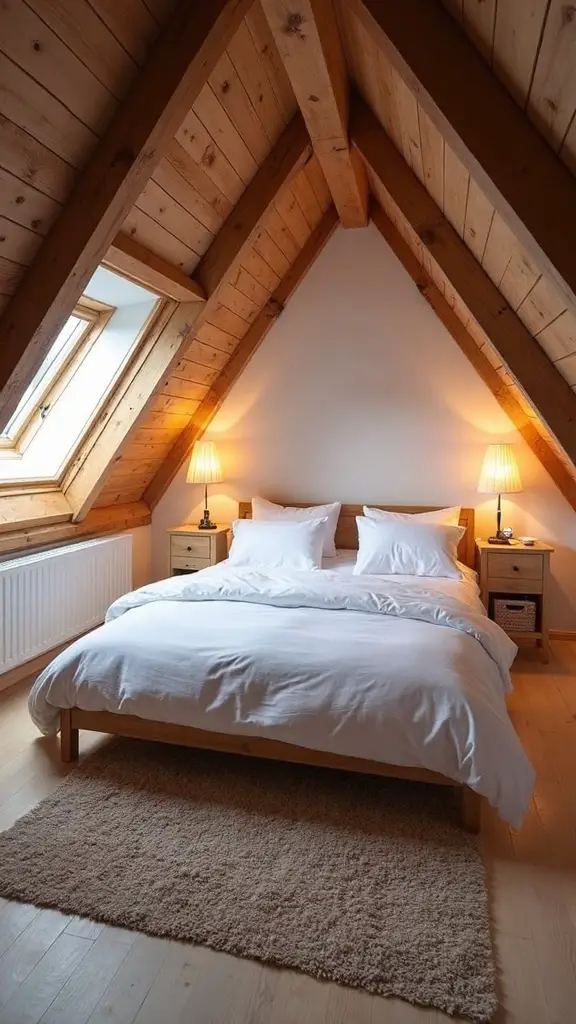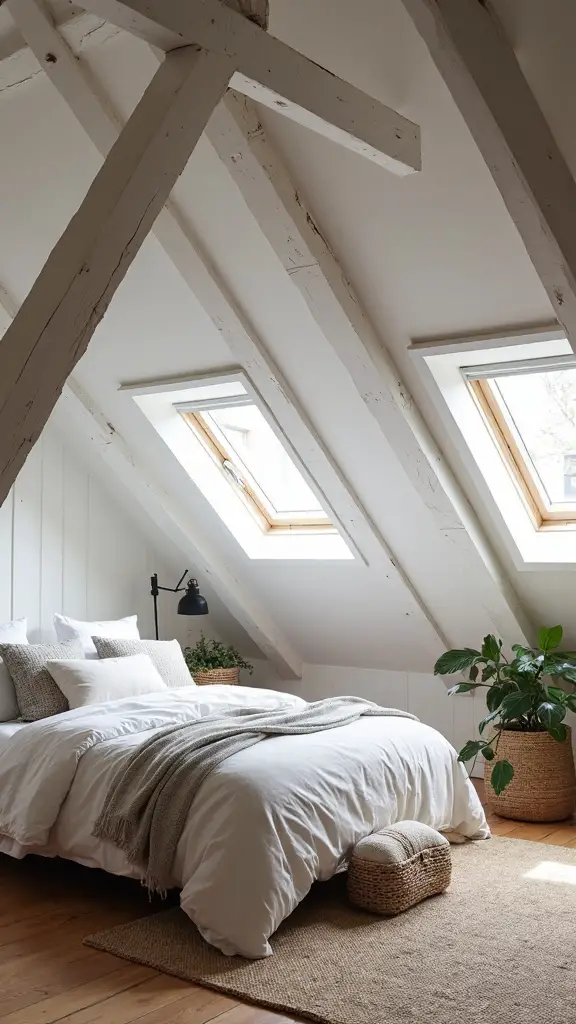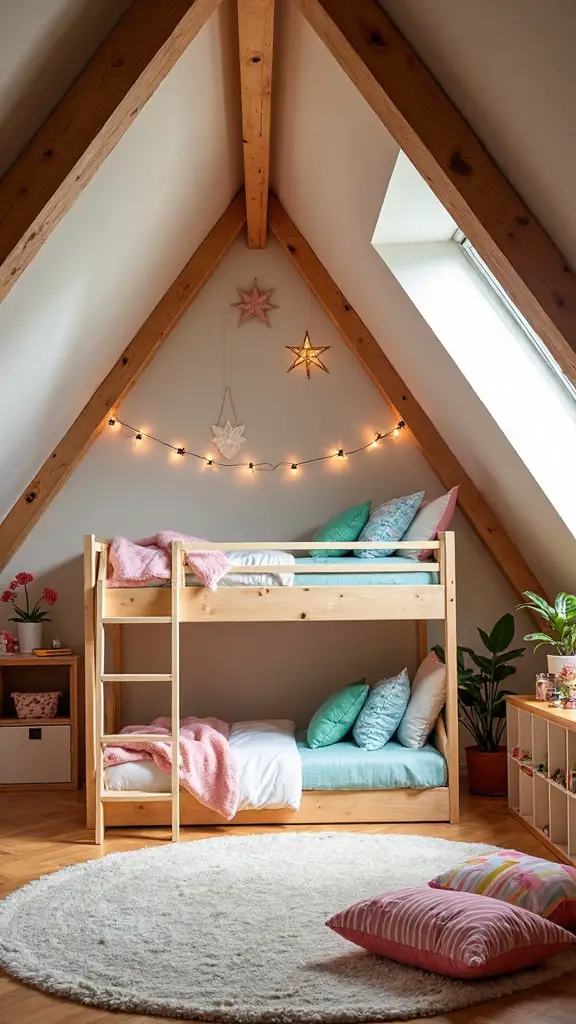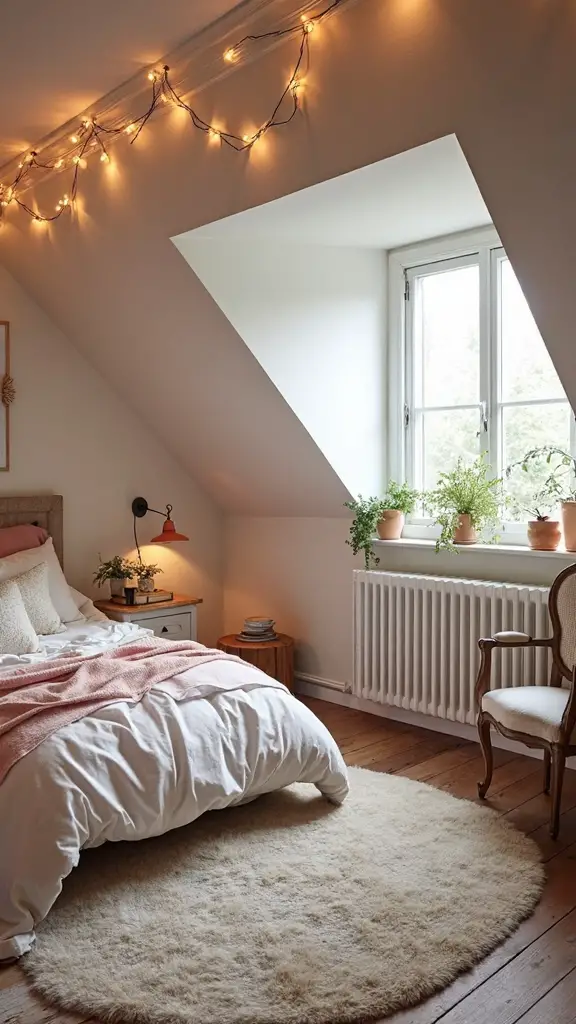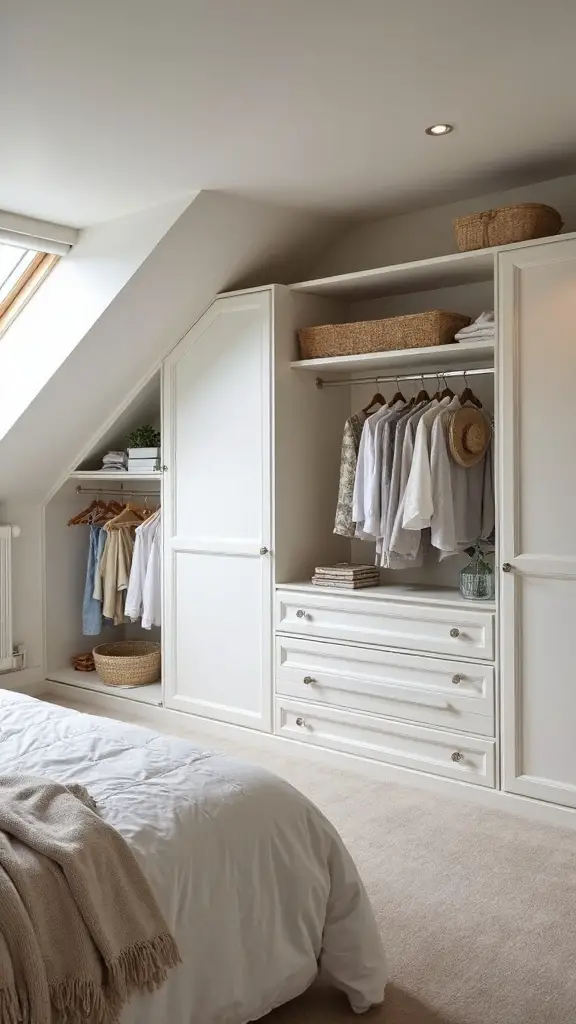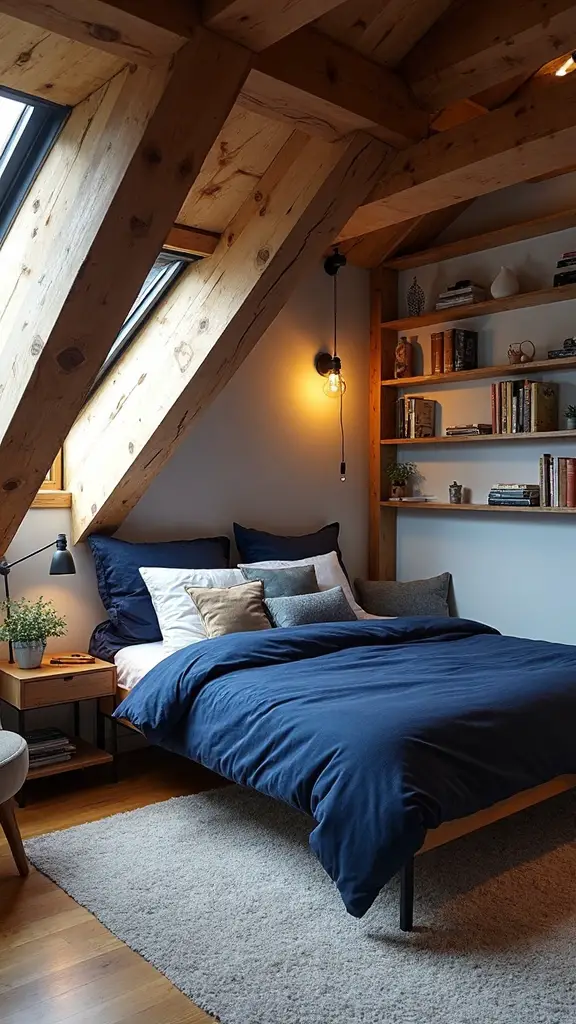How to Plan and Organize Attic Bedroom Storage Like a Pro
Just discovered the game-changing attic storage secrets that professional organizers use to triple bedroom space in cramped, angled rooms.
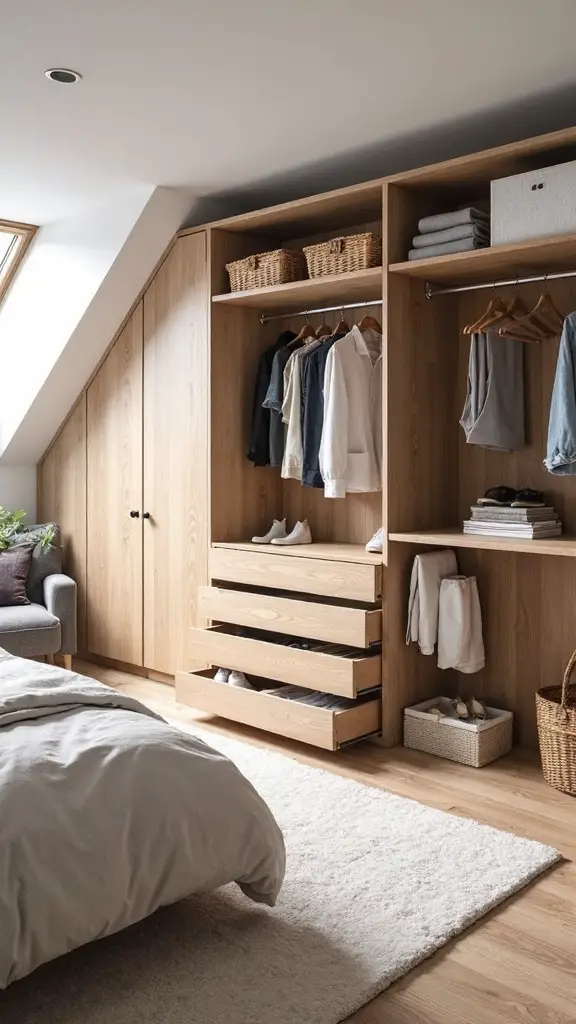
You’ll modify your cramped attic bedroom into a storage powerhouse once you understand the unique challenges these angled spaces present. Most homeowners make critical mistakes by ignoring structural limitations and choosing standard furniture that wastes precious square footage. However, with the right assessment techniques and custom solutions, you can triple your storage capacity while maintaining a comfortable living space. The secret lies in working with your attic’s quirks rather than against them.
Assess Your Attic’s Structural Limitations and Opportunities
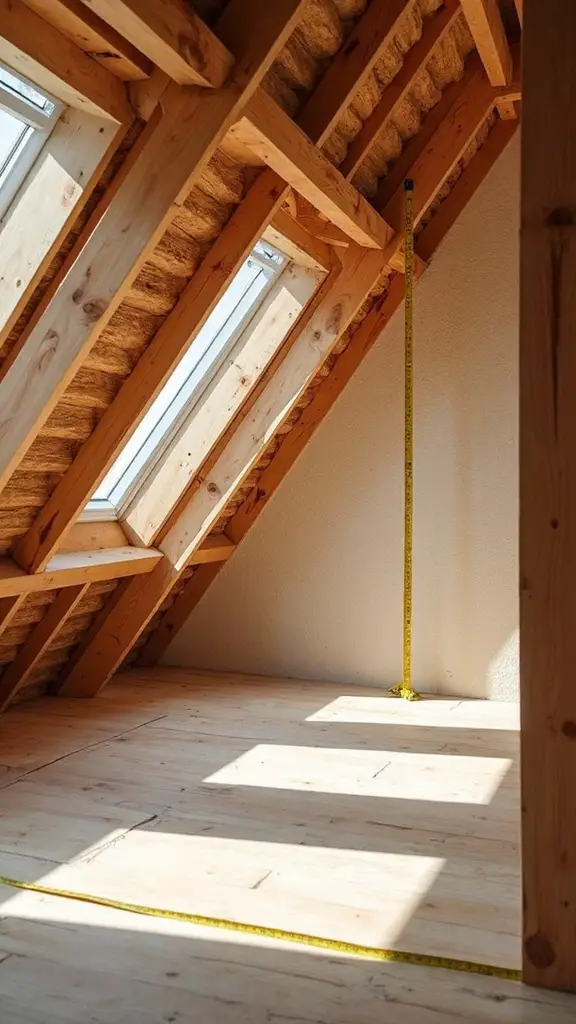
Before you start dreaming about your perfect attic bedroom storage system, you’ll need to conduct a thorough assessment of your space’s physical capabilities and constraints. Begin with ceiling height considerations—measure the headroom at different points since sloped roofs create varying clearances throughout the room. You’ll want at least seven feet of clearance in main walking areas for comfortable movement.
Next, prioritize structural inspection necessity by examining floor joists, ceiling beams, and load-bearing elements. Check for proper insulation, ventilation, and any signs of water damage that could affect your storage plans.
Maximize Storage in Low-Height Areas and Knee Walls
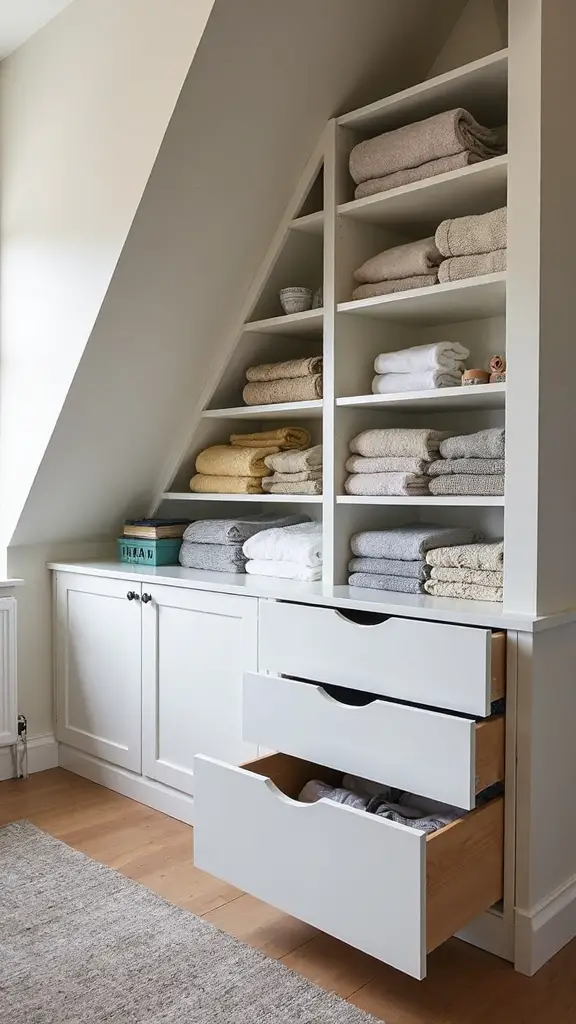
Once you’ve evaluated your attic’s structural foundation, you can turn those awkward low-height areas into storage powerhouses. Install custom shelving units along knee walls to accommodate books, linens, and seasonal clothing perfectly. These angled spaces work brilliantly for built-in drawers that slide horizontally rather than pulling straight out.
Consider multifunctional storage pieces like low benches with hidden compartments or rolling carts that fit under sloped ceilings. You’ll maximize every square inch by using stackable bins and vacuum-sealed bags for bulky items. Remember, areas under four feet high shouldn’t hold frequently accessed items—reserve those spots for long-term storage.
Design Custom Built-In Solutions for Sloped Ceilings
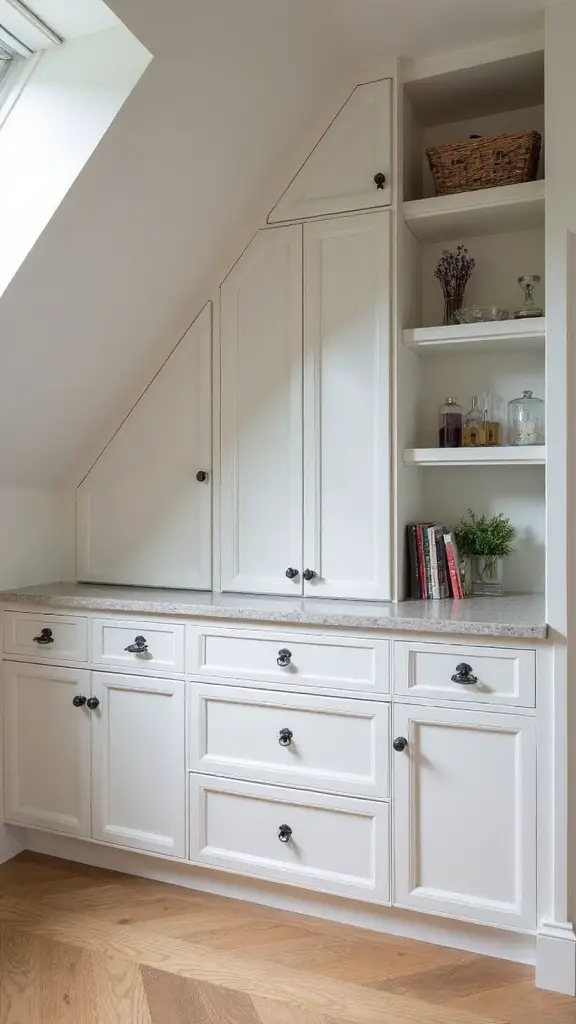
While sloped ceilings create unique challenges, they also offer incredible opportunities for truly customized storage solutions that work with your attic’s distinctive angles. Install angled shelving units that follow your roofline’s natural slope, creating seamless storage that doesn’t waste vertical space.
Build triangular compartments in corner areas where walls meet the ceiling to optimize corner storage spaces effectively. Design removable panels or hinged sections to organize storage for insulation access when maintenance is required.
Consider modular systems with adjustable components that accommodate your attic’s specific measurements and future storage needs.
Choose the Right Furniture for Angled Spaces
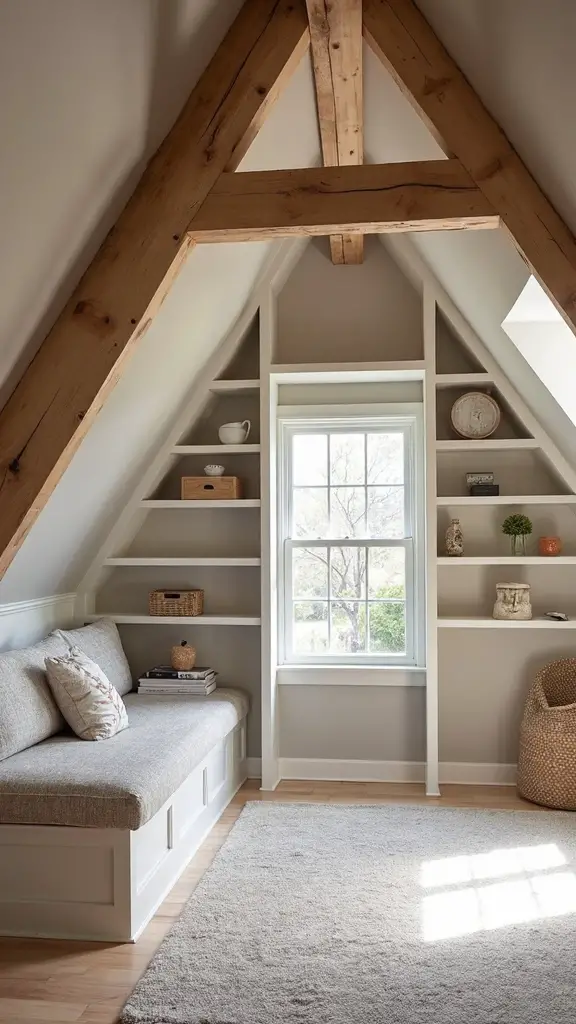
Selecting furniture that complements your attic’s angular design requires a strategic approach that balances functionality with space optimization. Focus on angled furniture placement by positioning low-profile dressers and nightstands under sloped areas where you can’t stand upright.
Choose triangular corner shelves that fit naturally into awkward angles, maximizing every inch of available space. Invest in multifunctional storage units like ottoman beds or storage benches that serve dual purposes.
Select furniture with clean lines and compact dimensions that won’t overwhelm your space. Round or oval pieces work better than sharp corners in tight angular areas.
Organize Seasonal Items and Clothing Efficiently
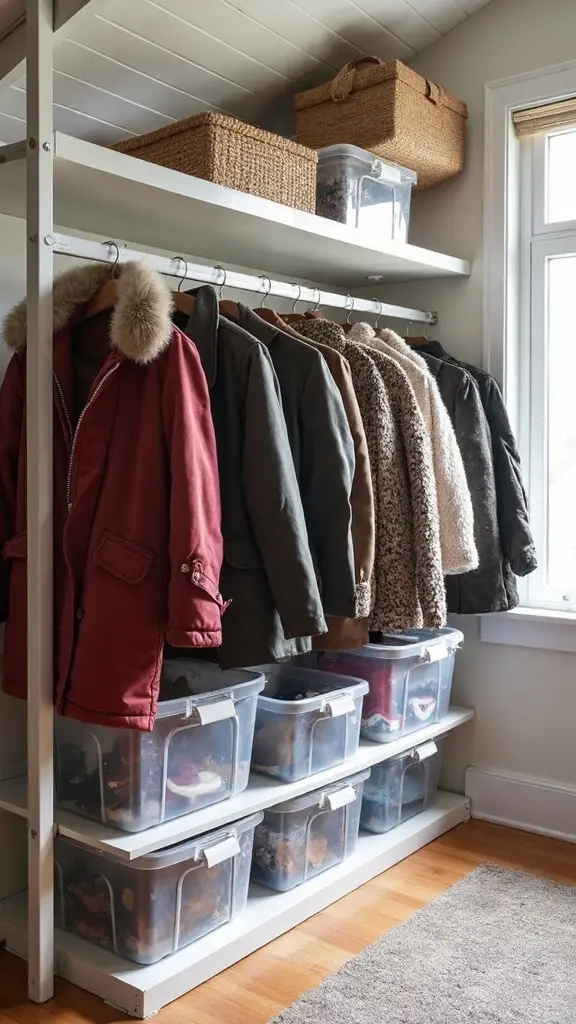
How can you convert your attic bedroom’s sloped ceilings and awkward angles into highly efficient storage zones for your seasonal wardrobe? Start by designating specific areas for different seasons, placing winter items in harder-to-reach corners during summer months.
Use vacuum-sealed bags to maximize space under eaves, and rotate out of season apparel every six months. Install pull-out drawers in low-ceiling areas for easy access to frequently used items. Always label storage containers with contents and dates to prevent confusion.
Consider cedar blocks or moisture absorbers to protect fabrics from humidity damage in your attic environment.
Create Accessible Storage Systems That Grow With Your Needs
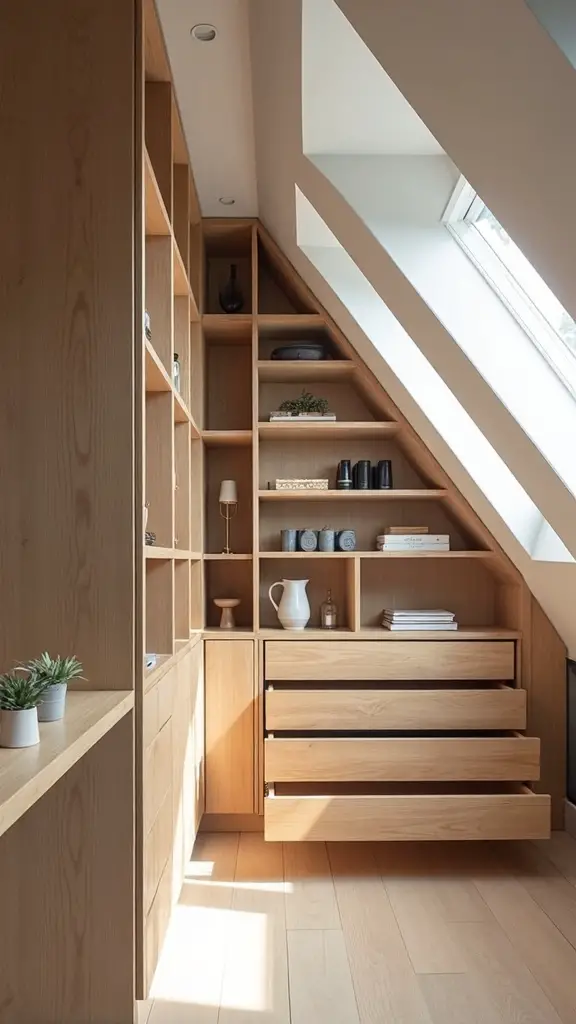
Since your storage needs will inevitably change over time, building flexible systems from the start saves you countless hours of future reorganization. Install modular shelving units with adjustable brackets that accommodate different item heights as your belongings evolve. Choose stackable bins and expandable drawer systems that maximize smart space utilization while adapting to new requirements.
Consider investing in flexible shelving options like track-mounted systems or freestanding units you can reconfigure easily. Add rolling carts for frequently accessed items and use vertical dividers that adjust to different storage configurations, ensuring your attic bedroom organization grows seamlessly with your changing lifestyle.
Conclusion
You’ve now got the blueprint for altering your attic bedroom into a storage powerhouse that works with its unique architecture. By evaluating structural elements, maximizing knee walls, planning custom built-ins, selecting appropriate furniture, and creating organized systems, you’ll turn challenging angles into storage advantages. Remember to prioritize accessibility and plan for future needs as you implement these professional strategies in your space.
